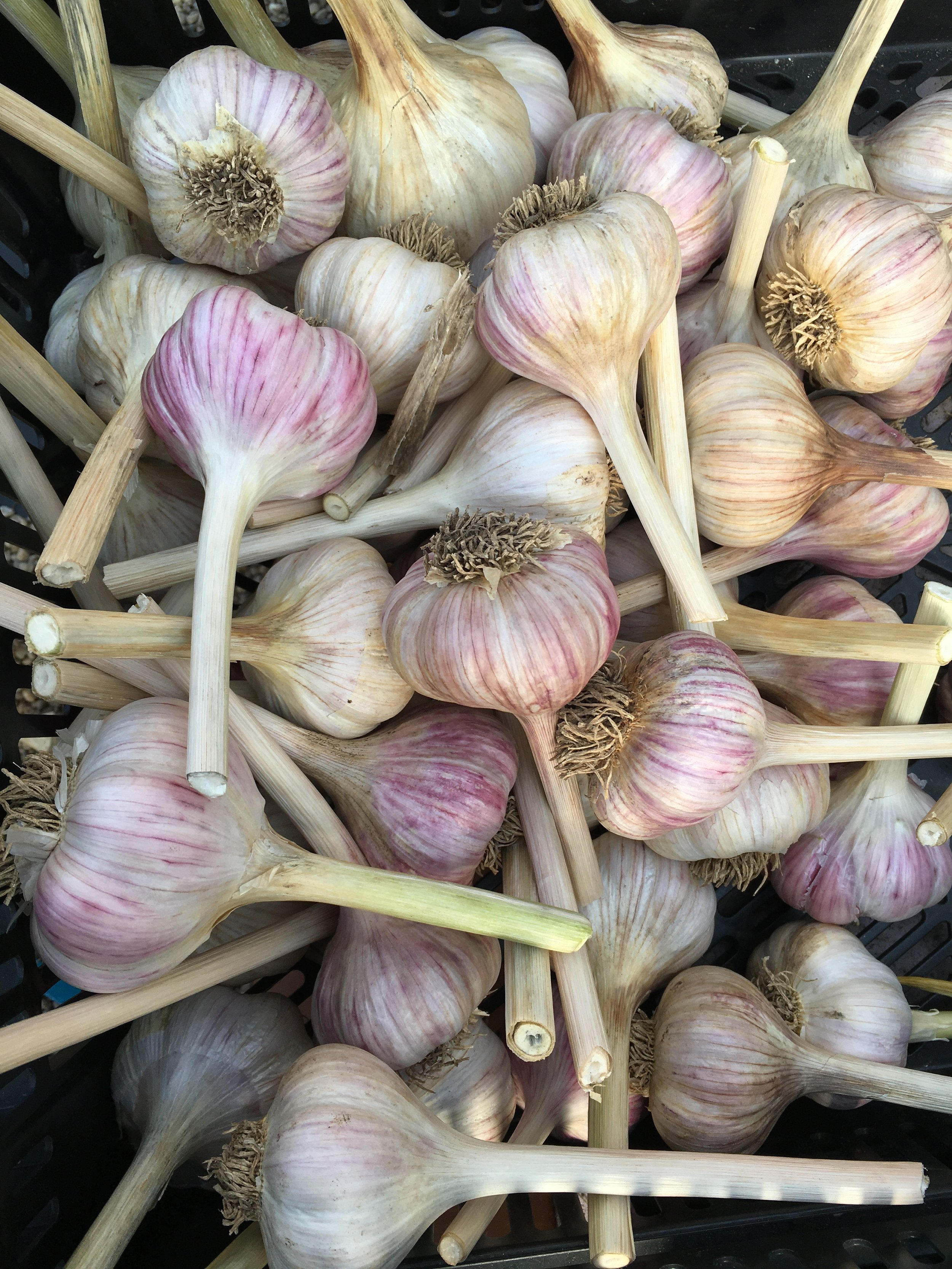August 24th, 2022
What’s In Your Share?
Carrots
Italian Sweet Peppers
Red and Orange Bell Peppers
Heirloom Tomatoes
Cherry Tomatoes
Hardneck Garlic
Red Onions
Hey everyone. So in beginning my commentary on Bernstein’s, I decided I’m going to need a little more time (and likely more than one week’s newsletter) to construct a meaningful review and strategic proposal and application for Village Farmstead and our broader context within the food system. Please, stay tuned on that one. And, if you haven’t gotten around to it, you now have a little more time to get through Bernstein’s argument.
That said, we do have some fun news to share! We have decided to add a four week extension of the CSA for up to 40 members - first come, first served.
We thought it might be helpful for y’all to understand how we value the November season extension share in comparisons to our summer CSA as there are many added variables, and often added costs; for the veggies, the land, the farmers, and - as a member of the farm as a whole - for the consumers, as well.
Garlic Party 2022 was a success! Got all the garlic cleaned - now its time to sort out the seed for next season.
A share will include, more-or-less: a weekly bag of salad mix @ $5+, turnips or radishes @ $3+, carrots or beets @ $4+, a brassica such as bok choy or kale @ $4+, head lettuce or cooking greens @ $4, Potatoes, onions, or garlic @ $4+. The dollar amounts are roughly the minimum value we give to our typical unit sizes of each of these produce items during the regular season. The plus (+) sign indicates that we often have a higher actual yield than our target. The greater yield is then shared with our CSA members as originally intended.
Generally, we aim to keep all of our Regular Season CSA shares valued at $25 (or, 6 cans of Pabst Blue Ribbon at your local watering hole) as demonstrated above, and we hope to do the same with the November share. We will, however, charge an added 25% to adjust for out-of-season costs. Therefore, the total cost will be $125 TOTAL for the four week share. Simply put, the cost adjustments will hopefully make up for some of the added labor, space/time, and environmental cost primarily attributed to Wisconsin’s winter conditions.
Here are some examples of what we mean by added labor, space/time, and environmental costs. Regarding labor, we will have to pay extra attention to temperature lows, making sure to purge water lines, tightly seal up field tunnels, and wear our neoprene gloves for washing on colder days and nights. By space/time, I’m referring to the fact that, as a small farm, every square foot of soil needs to produce a certain value for a crop/practice to be worth it for us from a business and stewardship perspective. In winter as the temperature and day-length decreases, plants take longer to grow; and as a result, we will have to make space in the next coming weeks for these plants to get a head start, thus taking up space that might have served another purpose (even if that other purpose was simply giving the soil a break). And finally, regarding one of the environmental costs, plants grown out-of-season put to the test just how far outside the “natural” balance we can push our farm. Sadly, for our farm to exist outside this balance, it requires the use of plastic. Our plastic-covered field tunnels and row cover will be put to the test and inevitably require some updates after the added 4 weeks. However, since we have already made a deal with the polymer devil, we’d figure we might as well get the most of it.
Need some pepper inspiration? We made these Philly Cheesesteaks last week and they were awesome! Followed this recipe for our first time Philly Cheesesteak Recipe
We have only grown for market in November one other time - during our first CSA season - and to say the least, we learned a lot from that experience and chose not to the last two seasons. This year, however, after much deliberation, we’re going to make another go of it. The past few seasons, the falls have actually been quite favorable to growing inside the field tunnels. We always plants a few beds of lettuce, spinach, and other greens and roots to harvest for ourselves and our roommates, and have had success usually until the changing of the New Year. We love having greens in the colder months, but our CSA season favors the warm weather. We’ve found that starting earlier is very hard, but stretching the season on the later end might be more tangible. This being said, we’d love to be able to share our harvest as long as possible. We have the tunnel space, so we might as well get as much as we can out of it, while still allowing a good winter’s rest (for ourselves and our soil) when it starts to get really cold.
Last fall, we started planning a perennial pasture grass in the back 9 acres of our land that is co-managed by all of the folks in our housing co-op. Our neighbor was gracious enough to come and plow it for us with his tractor, and also offered to seed it for us in a couple weeks!



